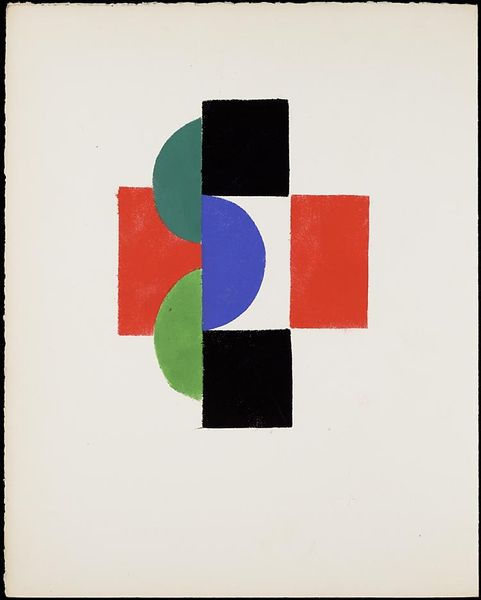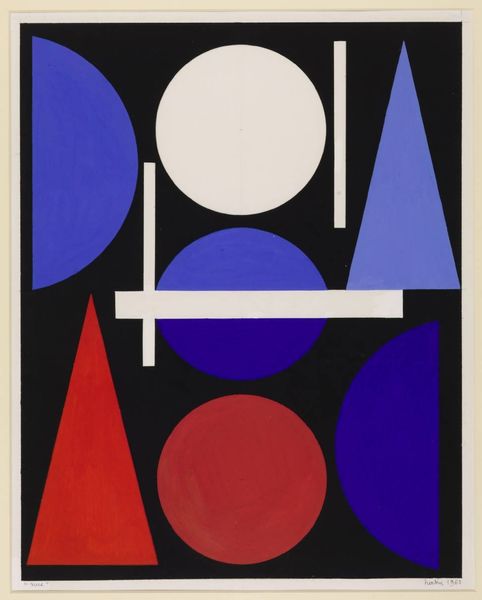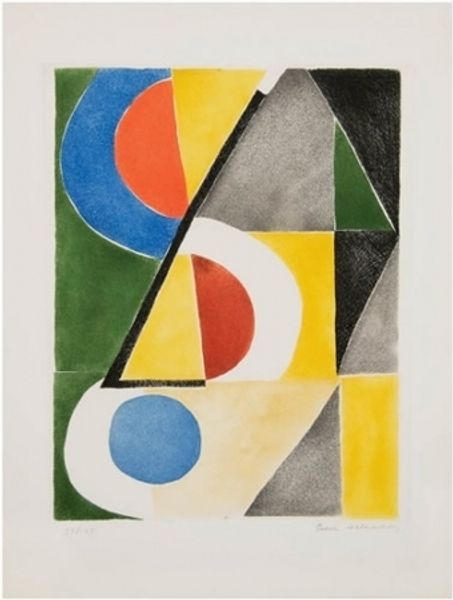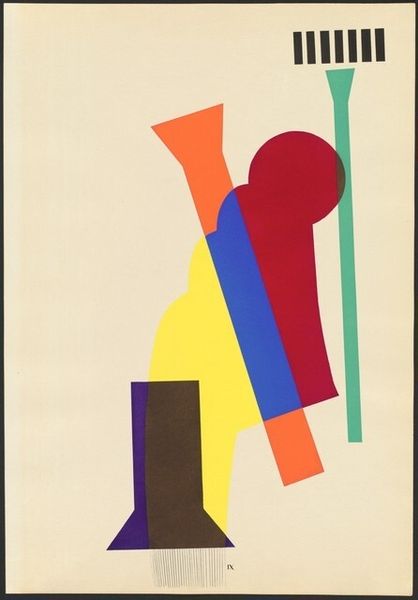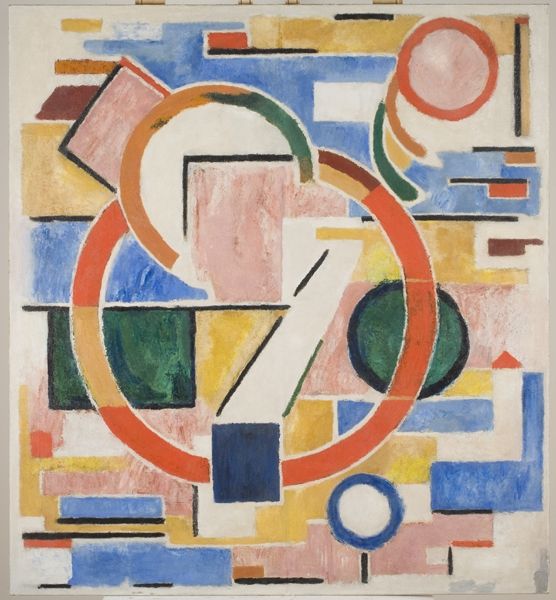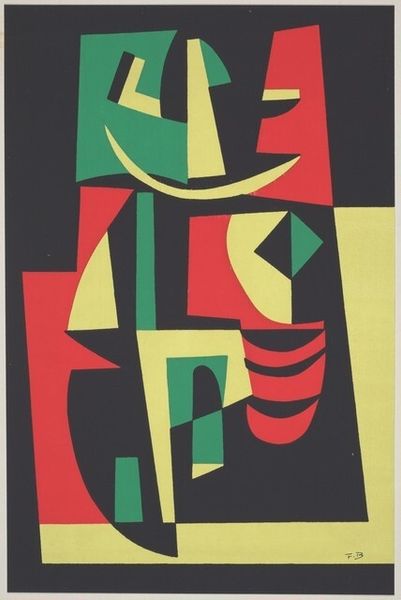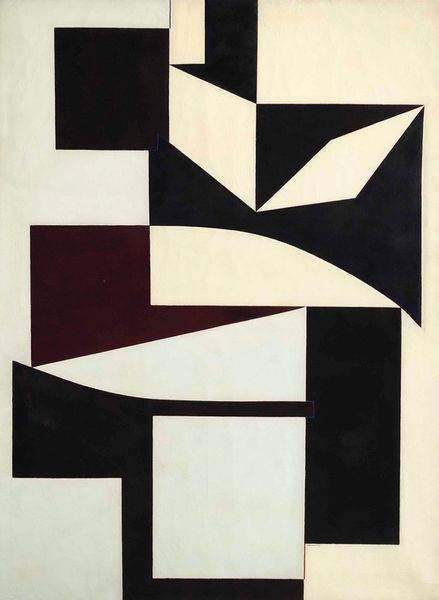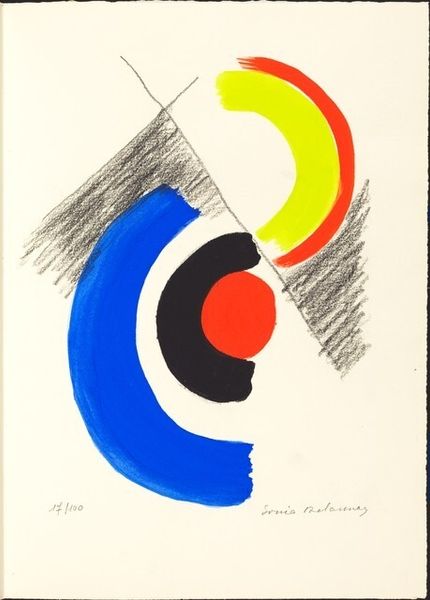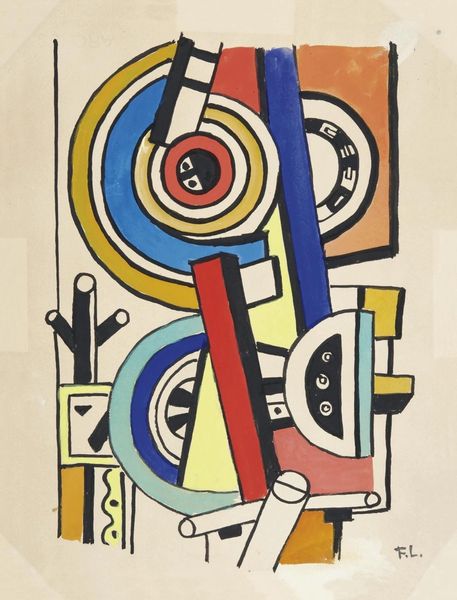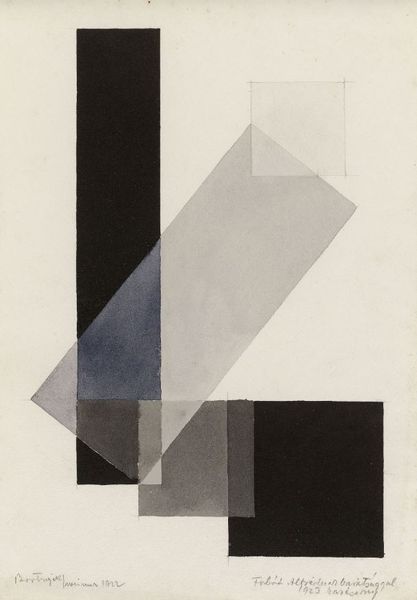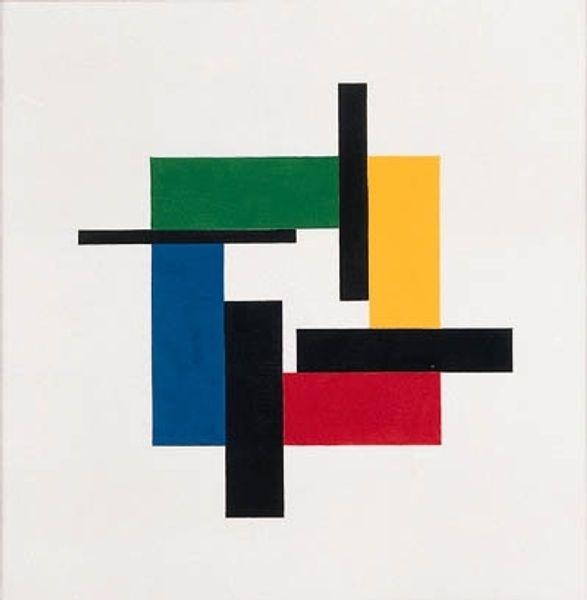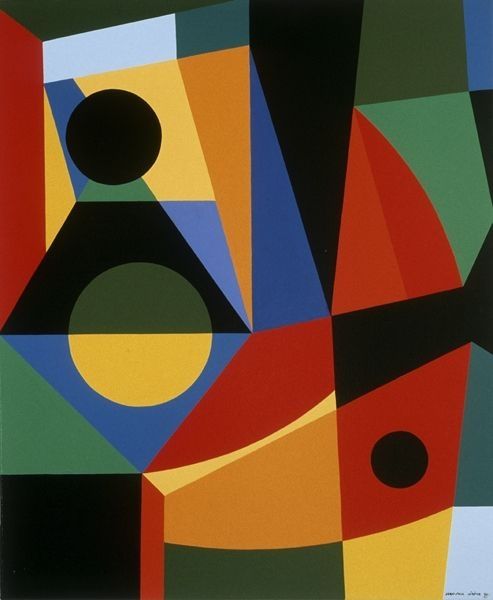
collage, painting, gouache
#
neo-plasticism
#
collage
#
painting
#
gouache
#
colour-field-painting
#
geometric
#
abstraction
#
modernism
Copyright: Sonia Delaunay,Fair Use
Curator: Taking a look here, we have an Untitled gouache by Sonia Delaunay, created in 1956. It served as an illustration for Tristan Tzara's "Le fruit permis." Editor: My first thought is how incredibly playful this feels despite its geometric rigor. The colors—the primary red and blue against that bold black—they really pop against the paper. It has a striking, graphic quality. Curator: Indeed. The use of gouache lends itself to those solid blocks of color, creating crisp edges and a matte finish. Consider also Delaunay's connection to Tzara and the Dada movement. The print exists not only as art object but to support a project coming out of Zurich. Editor: Absolutely. It is essential to look at the work through the lens of her broader practice. This print's creation likely represents Delaunay's economic challenges during this mid-century period. What relationship did the artist have with Atelier Mourlot, and to what extent were its lithographic standards adopted for gouache print? Curator: That tension between the aesthetic choices and economic circumstances seems to drive the direction toward applied art here. Delaunay was known for bridging those high art and craft divides. This design illustrates how artistic labor enters a different sphere when employed for book production, shifting its social context and intended audience. Editor: Speaking of the audience, let’s not forget that Tzara’s “Le fruit permis” engages with themes of forbidden knowledge and societal constraints. How might this abstract imagery complement—or perhaps intentionally clash with—the poem's subject matter? Was Delaunay working directly with the presses here to produce a fine book accessible to an informed public? Curator: That is a fascinating point. The use of abstraction itself could be a way of challenging those traditional forms, a visual analogy for breaking free from literary conventions. Editor: The stark contrasts might hint at the tension within Tzara’s poem, or maybe highlight the inherent push-pull dynamic that existed within European modernism. Curator: Looking at Delaunay's body of work with book design really brings to light the material conditions influencing the move between fine and applied art, illuminating those questions about production and social purpose. Editor: And for me, considering it as an illustration, within the narrative of both Delaunay's life and 20th-century avant-garde movements, that enriches its resonance tremendously.
Comments
No comments
Be the first to comment and join the conversation on the ultimate creative platform.
